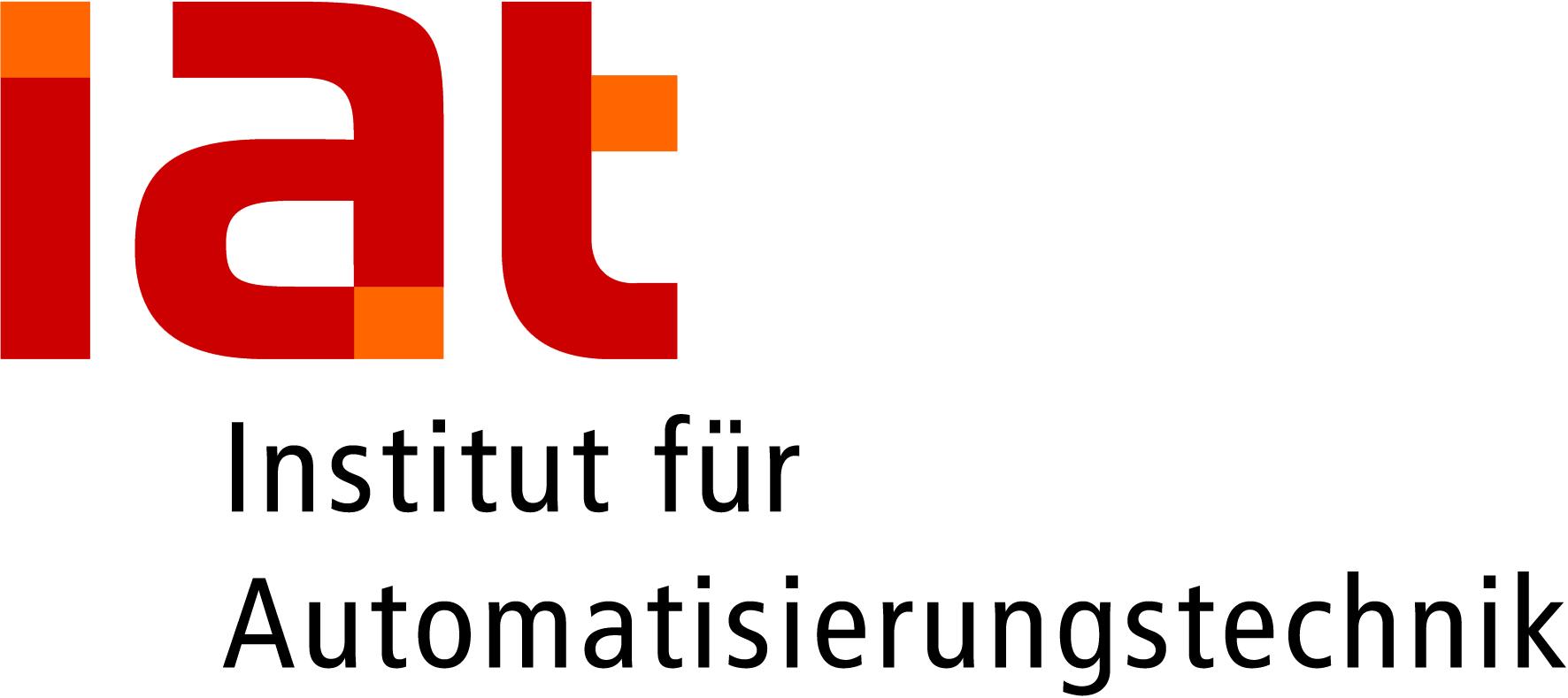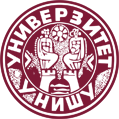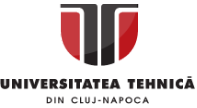UB | Universität Bremen - Institut für Automatisierungstechnik (IAT), Germany


Role in the project
- UB is the SMART2 project coordinator
- Leader of WPs:
- WP 2 – On-board obstacle and track intrusion detection system
- WP 8 – Project management and coordination
UB is the main responsible partner for software development for advanced on-board obstacle detection and truck intrusion detection (OD&TID) system and for drone-based OD&TID. UB will have the leading role in development and implementation of advanced machine learning-based methods for long-range obstacle detection and distance estimation.
The University of Bremen (www.uni-bremen.de) is among top 50 European research universities less than 50 years old and is an inspiring centre of research&education. It is a mid-sized university founded as a reform university in the 1970s. It offers a full-spectrum of academic disciplines in the natural sciences, engineering, social sciences and the humanities. UB has a long established tradition in interdisciplinary cooperation and excellent research. UB attracts funding for research&innovation both at National and EU level. Close collaboration with numerous independent research institutes, both on campus and close-by technology parks, have attracted more than four hundred research and business ventures, creating a vital and agile technology hub. The number of UB projects in the EU Framework Programmes: 102 in FP5-FP6, 127 in FP7 and currently 69 in H2020.
One of the main research areas of the Robotics and Autonomous Systems Group of the Institute of Automation (IAT) at the University of Bremen (www.uni-bremen.de/iat/ag-prof-dr-ing-michels/projekte/projekte-robotik) is robust environment perception for the real-time robotics and autonomous systems applications. Over recent years, IAT researches have participated in a number of national (German) and EU projects and have developed vision systems for different applications such as vision guided robotic object grasping and vision-based autonomous obstacle detection for railways.
IAT knowledge and experience in developing robust vision systems for robotics and autonomous systems, gained in completed and ongoing projects, as well as IAT expertise in coordination of national and international (EU) collaborative projects will be leveraged into the SMART2 project
OHB-DS | OHB Digital Services, Germany

Role in the project
- Software Development, Cloud Computing, IoT
- Leader of WP5, the main responsible partner for SMART2 prototype integration
OHB Digital Services (www.ohb-ds.de) is a nationally and internationally operating consulting and software company with headquarters in Bremen, Germany. We design and implement software-based solutions for our clients by using technologies from leading providers such as Microsoft, Google and Apple. Our customer range covers large to midsize companies. OHB DS assists its customers in implementing their cloud strategies. We implement IoT solutions for our industrial partners by setting up sensors and by securely transferring the resulting data to the cloud. Inside the cloud, that data is combined with multiple other sources for real-time data fusion and analysis.
Besides the prototype integration task, OHB DS implements the cloud architecture for the SMART 2 system and supports the deployment of Decision Support System (DSS). We are Microsoft Silver Partner for cloud solutions and Microsoft Gold Partner for application development, with inhouse know-how and industrial experience. In addition, we share our expertise with consortium partners. We share knowledge on how to design and implement algorithms, so that overall stability, reliability and performance is ensured when deployed within the cloud environment. We also provide expert input and design suggestions for interfaces and data security.
We are certified according to ISO 9001:2015 norm and our software development process is following SPICE Level-3. Furthermore, within the OHB group, we have a long standing expertise in the railway sector.
UNI | University of Niš - Faculty of Mechanical Engineering, Serbia

Role in the project
- Decision support system, airborne based demonstrator for OD&TID, evaluation.
- Leader of WPs
- WP 4 – DSS Decision Support System
- WP 6 – Evaluation
Beside the leading role, in WP4, UNI will have the leading role in development of methods for fusion of pre-processed data of three OD&TID sub-systems, on-board and TS/airborne. UNI will also have the leading role in evaluation activities in WP6.
UNI is SMART2 partner closely cooperating with Serbian railways being so the main responsible for conducting process for obtaining all the permits and other legal documents necessary for testing in relevant operational environment
The University of Niš (UNI) (www.ni.ac.rs) is a medium-sized, mature and well-developed academic community, comprising 14 faculties. UNI presently has about 26000 students at all levels of studies.
UNI has significant experience in international research and innovation projects such as FP6, FP7 and H2020.
The core of UNI Railcon research group comes from Faculty of Mechanical Engineering (www.masfak.ni.ac.rs) and consists of 10+ researchers from two departments: Department for Mechatronics and Control and Department for Machine Design, Development and Engineering.
One of the main research areas of the UNI Machine Design, Development and Engineering group and Transportation and Logistics group are Railways systems and one of the main research areas of Mechatronics and Control group are Robotics and Detection systems.
UNI knowledge and experience in development and implementation of intelligent techniques in detection systems and in solving different tasks in Railway systems makes them competitive for achieving project proposal objectives.
UNEW | University of Newcastle upon Tyne, United Kingdom

Role in the project
- Support the development of SMART2 technologies through contributions on:
- Analysis and definition of freight use cases
- Identification and analysis of requirements for railway applications (with focus on RAMS and security)
- Definition of system specifications
- Design of system functionalities and interfaces for different use cases
- Testing and evaluation of system prototype
- Leader of:
- WP1: Use Cases, Requirements and Specifications
- Task 6.2: Specification of the evaluation methodology, metrics and procedures
- Subtask 7.3.2: Scientific publication in related journals
Newcastle University is a member of the elite Russell Group, an association of the top 24 leading research-intensive UK universities, and performs globally significant research across a wide range of disciplines and locations. Newcastle University is involved in the SMART2 project through the Railway Technologies team of NewRail, https://www.ncl.ac.uk/newrail/ , the Newcastle Centre for Railway Research (currently part of the Future Mobility Group). The team has achieved significant capabilities in design, analysis and modelling of novel railway technologies and solutions, being involved in leading EU and worldwide rail research for over twelve years.
Previous work that is relevant to SMART2 activities include:
- Development of new techniques and methodologies for condition monitoring and tracking systems;
- Contributions to the design and implementation of scenarios for testing new technologies and systems in railway environment, including pilot tests that were successfully carried out in controlled railway environment on NewRail facility at Barrow Hill, UK, and in operational conditions on various testing sites and railway networks;
- Work relating to the development and testing on-site of various railway technologies.
UTC | The Technical University of Cluj-Napoca
Department of Mechatronics and Machine Dynamics

Role in the project
Leader of WP3 (Trackside/Airborne obstacle and track intrusion detection system)
The main objectives of WP3 are:
- to develop and implement a stationary trackside OD&TID system;
- to develop an airborne OD&TID system.
UTC has the main role in WP3 (Trackside/Airborne obstacle and track intrusion detection system) for research, design, implementation, testing and integration of an autonomous drone-based OD&TID system in railways.
The Technical University of Cluj-Napoca (www.utcluj.ro) is concerned with the international exchange of scientific values, and this trend is found in the over 400 inter-university collaboration agreements or in the large number of students and staff mobilities. Opening towards the European and world space of education and research through a steady process of internationalization is one of the major objectives of the university. Research is, along with education, the main priority of the Technical University of Cluj-Napoca. In all faculties of the university there are research structures, from collectives, groups and laboratories, to research centers and platforms. The performance anchored in the socio-economic environment, the international visibility and cooperation as well as the scientific novelty and interdisciplinarity are some of the characteristics of the research environment of the Technical University of Cluj-Napoca.
In terms of relevance to this project, the activity of the Department of Mechatronics and Machine Dynamics is oriented towards the following main topic of research: development of the airborne OD&TID system (WP3).
HDS | HARDER digital SOVA, Serbia

Role in the project
- Responsible for implementation of SWIR camera sensor system with active illumination (WP2).
- Leader of WP7 – Dissemination and exploitation
HARDER digital SOVA (www.harderdigital.com) is member of Harder Digital Optoelectronic Group. The main company activities are development, manufacturing and marketing of all kind of image intensifier tubes and related components for armed forces, law enforcement agencies and civilian market.
During the last years HARDER digital SOVA became one of the very few leading companies in the field of Image Intensifiers Manufacturing, covering range of Gen I, high performance Gen II and state of the art Gen III Image intensifiers as well as custom made Image Tubes. HARDER digital SOVA is developing, manufacturing and providing state of the art Manufacturing Equipment for Image Tubes and components. Among unique Manufacturing Equipment are processing stations, ultra high vacuum equipment and chemical processing customized equipment.
HARDER digital SOVA standard configuration Image Intensifiers is mainly dedicated for various Night Vision Systems utilized by military and homeland security forces.
Standard Image Intensifiers are available from Generation I, Generation II, Generation III and Premium Technologies. However, various performance levels are available, personally tailored for individual customer/mission profile requirements. Custom made image intensifiers are widely used in special medical and industrial applications as well in some security night vision applications.
HARDER digital SOVA facility located in the southern part Republic of Serbia in the city of Nis Industrial Zone.
HARDER digital SOVA was established in 1975 as a part of EI Nis ( Electronic Industry ) in Serbia under the name EI Sova. Basic production was production of image intensifiers tube 1st generation which is later upgraded with the newest technology for 2nd and 3rd image intensifiers tube
In March 2008 HARDER.digital GmbH became a major shareholder of EI Sova after legal privatization proceedings. From that moment company is working under the name HARDER digital SOVA. From that period company was fully renovated including increasement of production capacity by installing additional machinery and increasing production infrasructure.
HARDER digital SOVA production areas contain 2,200 square meters of specially designed areas including: class ISO-6 and class ISO-7 clean rooms for processing and testing activities, mechanical shop for special die parts and custom stamped parts for vacuum applications.
The production area contains a complex gas pipe infrastructure, providing various types of inert and pressurized gases, as well as a water purifying system for de-ionized water. The entire production area has continuous temperature and humidity level control for uniform process performances. Testing area dark rooms are equipped with electrical, optical, electro-optical, photometric and environmental testing equipment, constantly monitoring final products as well as performing in-process controls. Stringent Quality Assurance procedures, incorporating advanced management techniques, providing every customer with a quality product, on time, every time.
FOKUS TECH napredne tehnologije d.o.o, Slovenia

Role in the project
- Development of advanced 3D obstacle detection system (trackside)
- Coordination of Tasks 3.1 and 3.3 in WP3
FOKUS TECH (www.fokus.si) is a private company founded in 2015. Our business in the field of railways is aimed at ensuring the safety of rail transport.
We are developing advanced 3D sensors and laser scanners for use in railway safety applications. Our systems are designed to detect obstacles and monitor dangerous areas such as level crossings, station platforms, tunnels, bridges, viaducts, places under the road overpasses, etc.
We can detect dangerous situations such as cars or people who remain stuck at the level crossing, passengers who have fallen from the station platform to the track, lost load and other objects that have fallen from overpasses, landslides, avalanches, mud, rocks, trees and other dangerous obstacles.
Our devices operate in all lighting conditions (day, night, direct sunlight) and in the most severe weather conditions. Obstacles can be reliably detected regardless of the type of material. Monitoring of larger perimeters can be performed by several separate sensors connected to a common control system.
